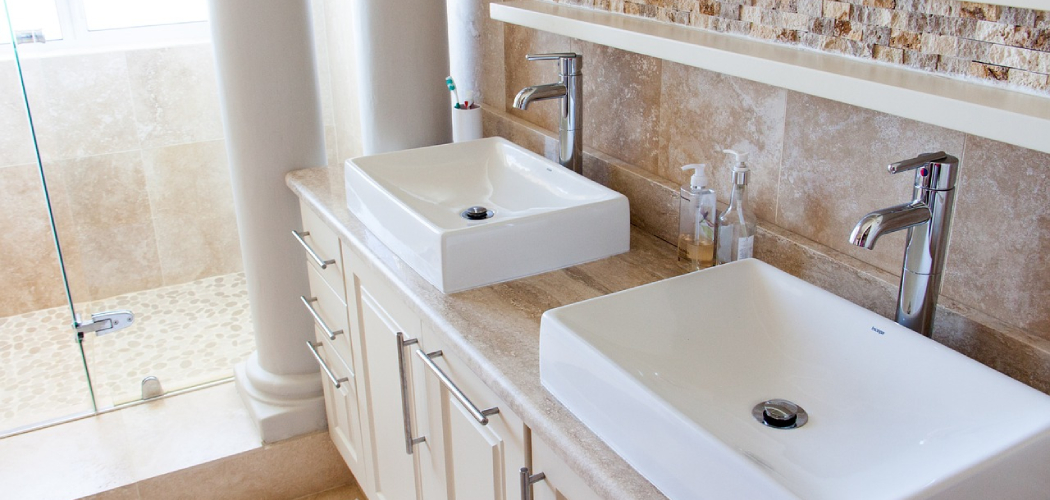Bathroom countertops serve as the centerpiece of daily hygiene and beauty routines, often enduring a constant barrage of water, soap, cosmetics, and more. Over time, this accumulation not only detracts from the aesthetic appeal of your bathroom but can also harbor bacteria and grime, making the cleaning process essential for maintaining a healthy and visually pleasing environment.
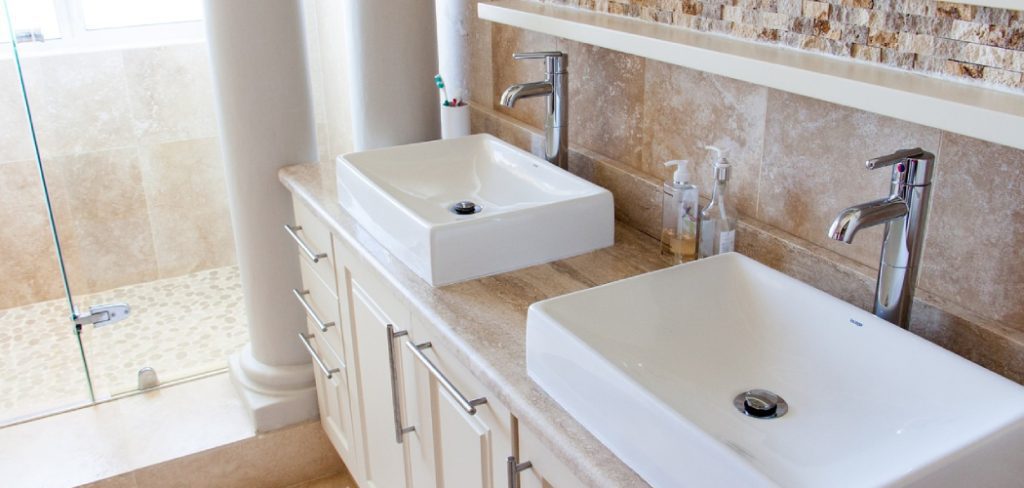
This guide on how to clean bathroom countertops will walk you through the best practices for cleaning various types of bathroom countertops, ensuring they remain pristine and durable. Whether your countertop is made from granite, marble, quartz, or laminate, we have tailored advice to keep your bathroom looking its best.
Why is it Important to Clean Bathroom Countertops Regularly?
Cleaning your bathroom countertops regularly serves several purposes. Firstly, it prevents the build-up of dirt, grime, and bacteria that can compromise the hygiene and health of your family. Secondly, regular cleaning helps maintain the appearance of your countertop and extends its lifespan. Lastly, a clean countertop makes for a more enjoyable and inviting bathroom experience.
Now that we have established the importance of cleaning your bathroom countertops let’s dive into some specific tips on how to do so effectively. It is recommended to clean your bathroom countertops at least once a week, but you may need to do it more frequently depending on your household’s usage and the type of countertop material.
Needed Materials
Microfiber Cloths:
Using microfiber cloths for cleaning bathroom countertops is highly recommended, as they are gentle but effective at removing dirt and grime without scratching the surface. They also eliminate the need for harsh chemicals, making them an eco-friendly option.
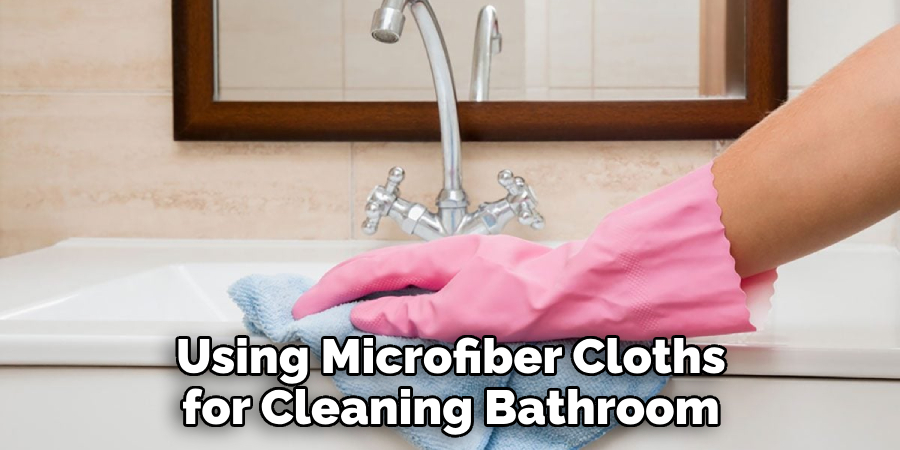
All-Purpose Cleaner:
An all-purpose cleaner can be used for daily or weekly cleaning of your bathroom countertop. Look for a cleaner that is specifically formulated for your countertop material or make one at home using equal parts water and vinegar.
Baking Soda:
Baking soda is a natural abrasive that can be used for tougher stains and buildup on bathroom countertops. Mix it with water to form a paste, apply it to the affected area, let it sit for a few minutes, then scrub and rinse off.
Hydrogen Peroxide:
Hydrogen peroxide is a powerful disinfectant that can effectively kill bacteria and viruses on your bathroom countertops. Dilute it with water and spray it onto the surface before wiping it down with a microfiber cloth.
11 Step-by-step Guidelines on How to Clean Bathroom Countertops
Step 1: Prepare the Surface
Remove any items from the countertop and wipe away loose debris with a dry cloth. This step is crucial, as it prevents dirt and grime from being spread around during the cleaning process. But be gentle to avoid scratching the surface. It’s also a good idea to run hot water over the countertop for a few minutes to loosen any stubborn debris or soap scum. The heat and moisture will make it easier to clean. It’s also a good idea to open a window or turn on the ventilation fan to prevent the buildup of fumes from cleaning products.
Step 2: Choose the Right Cleaner
As mentioned earlier, using an all-purpose cleaner is recommended for regular cleaning. However, for tougher stains or specific countertop materials, it’s best to use a cleaner specifically formulated for the material. If you prefer homemade solutions, make sure the ingredients are safe and gentle on the surface. You can also test the cleaner on a small, inconspicuous area first to ensure it doesn’t damage or discolor the countertop.
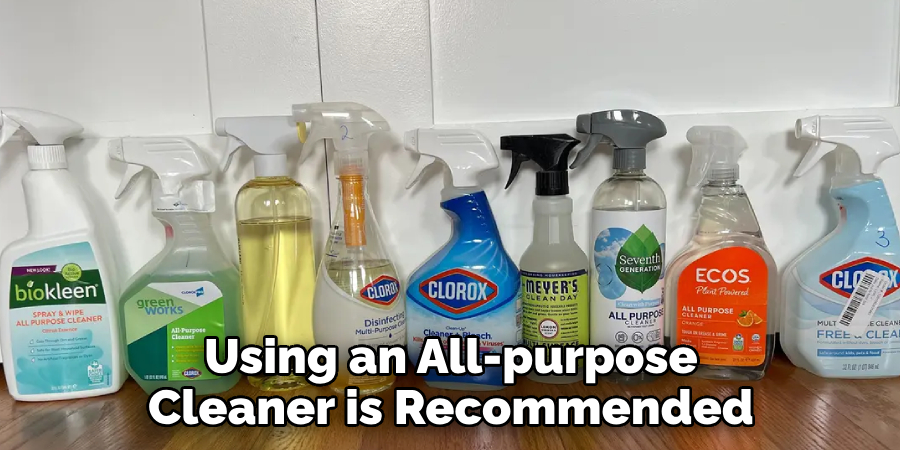
Step 3: Apply the Cleaner
Spray or pour the cleaner onto the countertop, covering the entire surface. Be generous with the amount of cleaner you use, especially if the countertop is heavily soiled. Use a clean microfiber cloth to spread the cleaner evenly and let it sit for a few minutes.
You can also use a soft-bristled brush for tougher stains, but be careful not to scratch the surface. But if baking soda is used, make a paste and apply it directly onto the stain. It’s also a good idea to let the cleaner sit for a few minutes, as this gives it time to break down any buildup and make the cleaning process easier.
Step 4: Wipe Down the Countertop
Using a clean microfiber cloth, wipe down the countertop in circular motions. Be thorough and don’t forget to clean any edges or crevices where dirt can accumulate. For tougher stains, you may need to scrub gently with a soft-bristled brush. If using baking soda, scrub the affected area with a sponge or cloth until the stain is removed. But be careful not to use too much pressure, as this can scratch the surface.
Step 5: Rinse Thoroughly
After wiping down the countertop, rinse it thoroughly with warm water. Use a clean cloth or sponge to remove any remaining cleaner residue. It’s essential to rinse well, as leftover cleaning products can leave behind a film that attracts dirt and grime, making your countertop look dirty again quickly. Warm water will also help kill any remaining bacteria and viruses. But if using baking soda, simply wipe it off with a clean, damp cloth. It’s also a good idea to dry the countertop with a clean towel after rinsing.
Step 6: Dry the Countertop
Using a dry microfiber cloth, pat the countertop dry. This step is crucial, as it helps prevent water spots and streaks from forming on the surface. It’s also a good idea to use a towel or cloth specifically designated for your countertop to avoid transferring bacteria or dirt onto the clean surface. The cloth should be clean and free from any chemicals or debris that could cause scratching.
Step 7: Disinfect (If Necessary)
If you want an extra layer of cleanliness, you can disinfect your bathroom countertop after cleaning it. Dilute hydrogen peroxide with water and spray it onto the surface, then wipe it down with a clean microfiber cloth. Letting the solution sit for a few minutes before wiping will give it time to kill any remaining bacteria or viruses. But be sure to rinse and dry the countertop after disinfecting. The hydrogen peroxide may leave behind a white residue if not rinsed off properly.
Step 8: Clean Up Any Spills or Stains Immediately
To keep your bathroom countertops looking clean and pristine, it’s essential to address any spills or stains as soon as they happen. This will prevent them from setting in and becoming harder to remove. Use a cloth or sponge with warm water and mild soap to clean up any spills, then rinse and dry the area thoroughly. It’s also a good idea to have a towel or cloth designated for spills and stains in your bathroom.
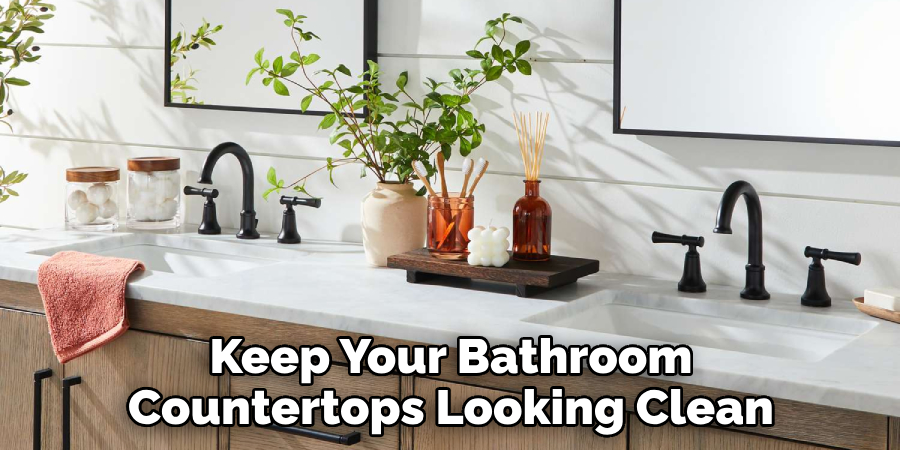
Step 9: Avoid Harsh Chemicals
Harsh chemicals like bleach or ammonia can damage your bathroom countertops by causing discoloration or etching. It’s best to avoid using these chemicals for regular cleaning and stick to milder, safer options. If you must use a harsh chemical for tough stains, make sure to follow the manufacturer’s instructions carefully and rinse well after using it. The key is to use them sparingly and not frequently, as excessive use can damage the surface.
Step 10: Use Cutting Boards or Trivets
To protect your bathroom countertops from scratches and heat damage, it’s a good idea to use cutting boards or trivets for any activities involving sharp objects or hot items. This will prevent any accidental scratches or burns from happening. It’s also essential to avoid placing heavy objects directly onto the countertop, as this can cause cracks or chips. It’s best to use a cutting board or trivet for any items weighing more than a few pounds.
Step 11: Regular Maintenance
To keep your bathroom countertops looking clean and new, it’s essential to perform regular maintenance. This includes wiping down the surface daily with a damp cloth or sponge and drying it thoroughly. It’s also a good idea to deep clean the counter once a week using the steps outlined above. Additionally, make sure to address any damage or chips promptly to prevent further issues.
Following these steps on how to clean bathroom countertops will help keep your bathroom countertops clean and maintain their appearance for years to come. Remember to choose the right cleaner, apply it correctly, and regularly maintain your countertops to ensure they stay looking their best. With proper care, you can enjoy a beautiful and sanitary bathroom countertop every day.
Cleaning Tips for Different Types of Bathroom Countertops
Granite Countertops
Granite countertops are a popular choice for bathrooms due to their durability and natural beauty. To clean granite countertops, follow these steps:
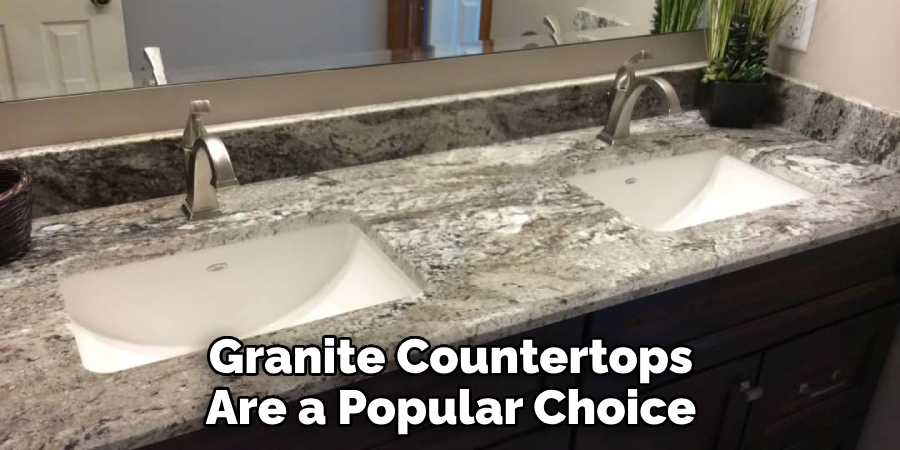
- Wipe the countertop with a damp cloth to remove any loose debris or dust.
- Mix warm water with a mild soap or stone cleaner in a spray bottle.
- Spray the solution onto the countertop and let it sit for a few minutes to loosen any stubborn stains.
- Use a soft-bristled brush or cloth to gently scrub the countertop, paying attention to any areas with visible stains.
- Rinse the solution thoroughly with warm water and dry the countertop with a clean towel.
- For tough stains, you can make a paste of baking soda and water and apply it to the affected area. Let it sit for a few minutes before scrubbing and rinsing off.
Remember to use a gentle touch when cleaning granite countertops, as harsh chemicals or abrasive cleaners can damage the surface.
Marble Countertops
Marble countertops add a touch of elegance to any bathroom, but they require delicate care to maintain their beauty. Here’s how to clean marble countertops:
- Begin by wiping the countertop with a damp cloth to remove any surface dirt.
- Mix warm water with a gentle pH-neutral cleaner or mild soap in a spray bottle.
- Spray the solution onto the countertop and let it sit for a few minutes.
- Gently scrub the countertop using a soft-bristled brush or cloth, paying attention to any stains.
- Rinse the solution thoroughly with warm water and dry the countertop with a clean towel.
- For tough stains, you can use a poultice made of baking soda and water. Apply it to the affected area, cover it with plastic wrap, and let it sit for 24 hours before gently removing and rinsing off the paste.
Avoid using acidic or abrasive cleaners on marble countertops, as they can cause etching and damage to the surface.
Quartz Countertops
Quartz countertops are highly durable and resistant to stains, making them a popular choice for bathrooms. Here’s how to clean quartz countertops:
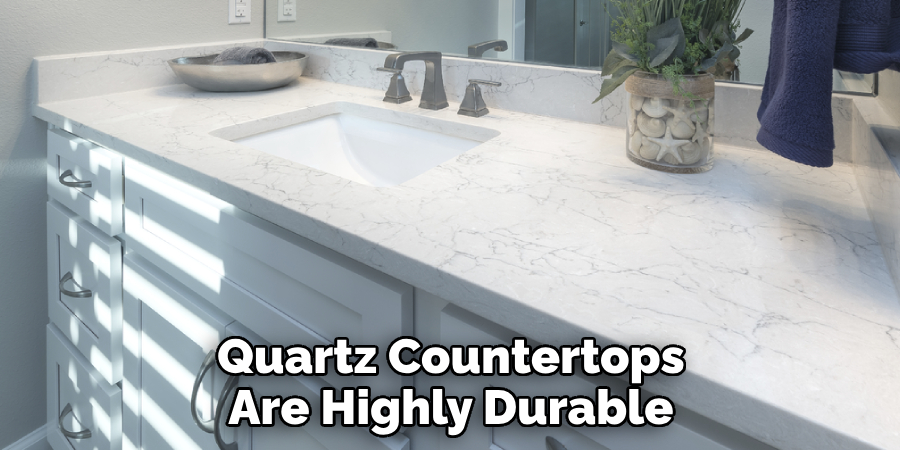
- Wipe the countertop with a damp cloth to remove any surface debris.
- Mix warm water with a mild soap or non-abrasive cleaner in a spray bottle.
- Spray the solution onto the countertop and let it sit for a few minutes.
- Use a soft-bristled brush or cloth to gently scrub the countertop, paying attention to any stubborn stains.
- Rinse the solution thoroughly with warm water and dry the countertop with a clean towel.
- For tough stains, you can use a non-abrasive cleaner specifically designed for quartz countertops.
Avoid using harsh chemicals or abrasive cleaners on quartz countertops as they can damage the surface.
Laminate Countertops
Laminate countertops are budget-friendly and easy to maintain, but they require regular cleaning to prevent staining and buildup. Here’s how to clean laminate countertops:
- Start by wiping the countertop with a damp cloth to remove any surface dirt.
- Mix warm water with a mild soap or all-purpose cleaner in a spray bottle.
- Spray the solution onto the countertop and let it sit for a few minutes.
- Gently scrub the countertop with a soft-bristled brush or cloth, paying attention to any stains.
- Rinse off the solution thoroughly with warm water and dry the countertop with a clean towel.
- For tough stains, you can use a baking soda paste or a mild abrasive cleaner, but be sure to test it on an inconspicuous area first to avoid damage.
Troubleshooting Common Issues: Stains, Scratches, and Chips
Stains:
If you notice any stubborn stains on your bathroom countertops, try using a specialized cleaner for the specific type of countertop. For tougher stains, you can also make a paste with baking soda and water and let it sit on the stain before gently scrubbing and rinsing off.
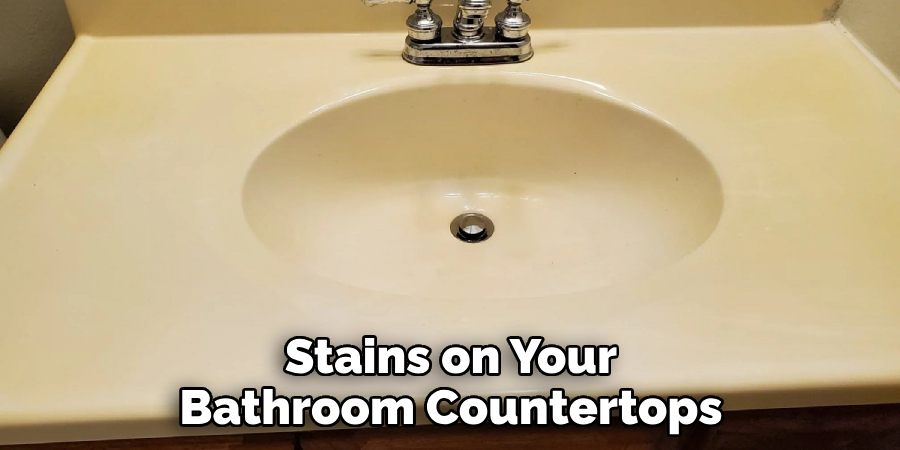
Scratches:
For minor scratches on a granite, marble, or quartz countertop, you can use a granite repair kit to fill in the scratch and then buff it out. For laminate countertops, try using a color-matched wax pencil to fill in the scratch.
Chips:
If you notice any chips in your bathroom countertops, it’s essential to address them promptly to prevent further damage. For granite or quartz countertops, you can use epoxy or resin to fill in and seal the chip. For laminate countertops, you can use a color-matched laminate repair paste.
Remember to always test any products on an inconspicuous area first before using them on your countertop.
Frequently Asked Questions
Q1: Can I Use Bleach to Clean My Bathroom Countertops?
A1: Bleach is not recommended on any type of countertop as it can cause damage and discoloration. But if you do use bleach, be sure to dilute it and rinse thoroughly with water afterward. It’s always best to use a cleaner specifically designed for your type of countertop.
Q2: How Often Should I Clean My Bathroom Countertops?
A2: It is recommended to clean your bathroom countertops at least once a week, but this can vary depending on your usage and the type of countertop. For example, granite and marble countertops may require more frequent cleaning to prevent staining, while laminate countertops may only need to be cleaned every two weeks.
Q3: Are There Any Special Precautions I Should Take When Cleaning My Countertops?
A3: It’s important to read and follow the instructions on your cleaner carefully, as some products may require gloves or proper ventilation. Additionally, it’s essential to avoid using abrasive cleaners or tools that can scratch the surface of your countertop. Always test any new products on an inconspicuous area first to ensure they will not damage the surface.
Finally, be sure to rinse and dry the countertops thoroughly after cleaning to prevent any residue buildup. By following these precautions, you can help maintain the beauty of your bathroom countertops for years to come. So, take your time and clean them with care to keep them looking as good as new!
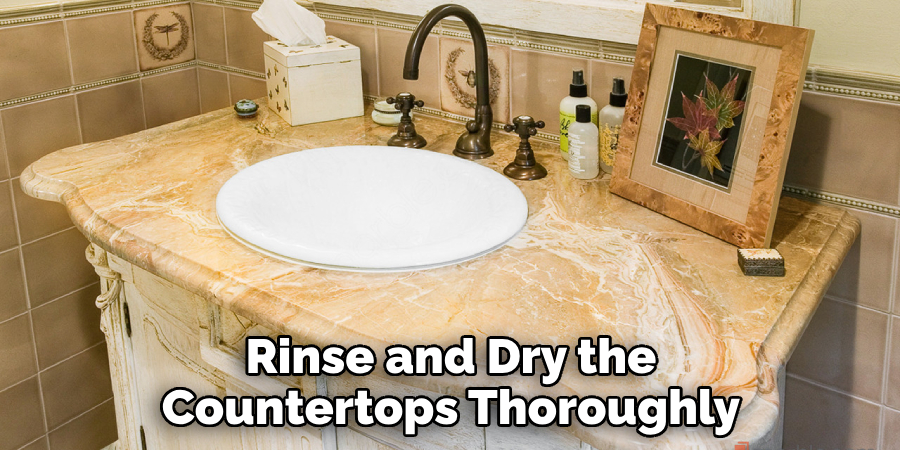
Conclusion
Properly cleaning and maintaining your bathroom countertops will not only keep them looking beautiful but also help prevent any damage or stains. Remember to choose the right cleaner for your specific type of countertop, follow the manufacturer’s instructions, and perform regular maintenance. With these tips on how to clean bathroom countertops in mind, you can enjoy a clean and sanitary bathroom countertop for years to come. So, make sure to follow these steps to clean and maintain your bathroom countertops regularly for a long-lasting, beautiful finish. Happy cleaning!

